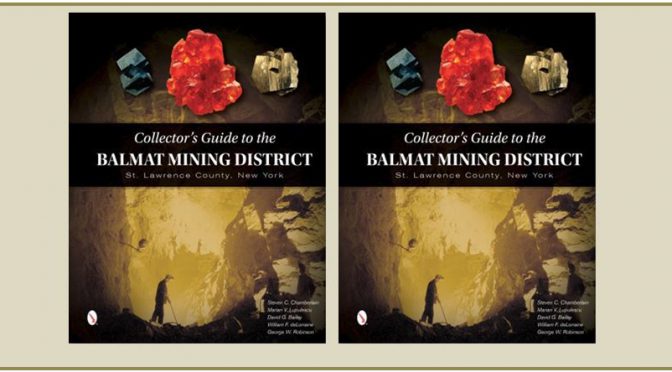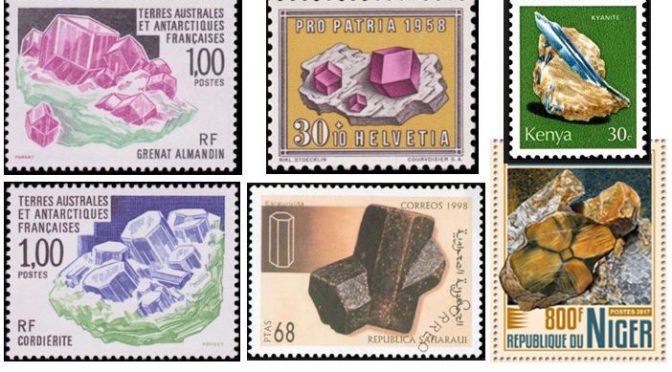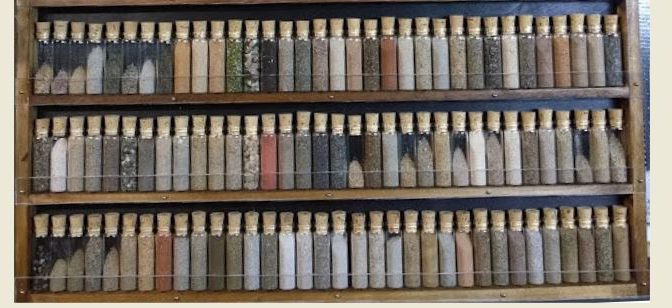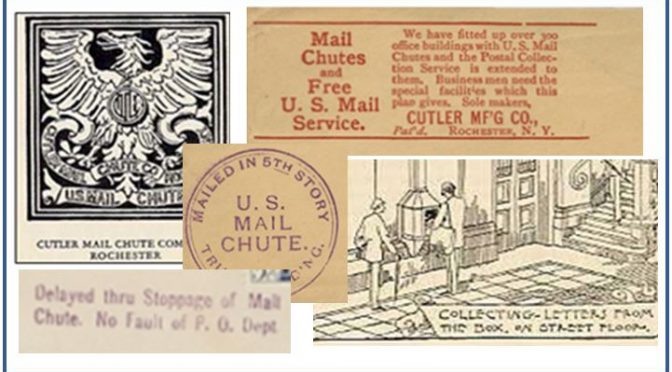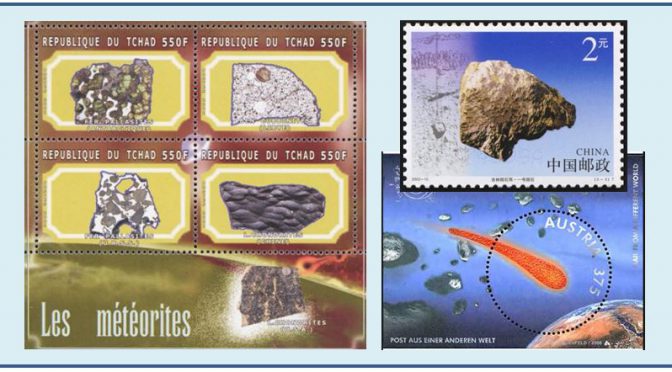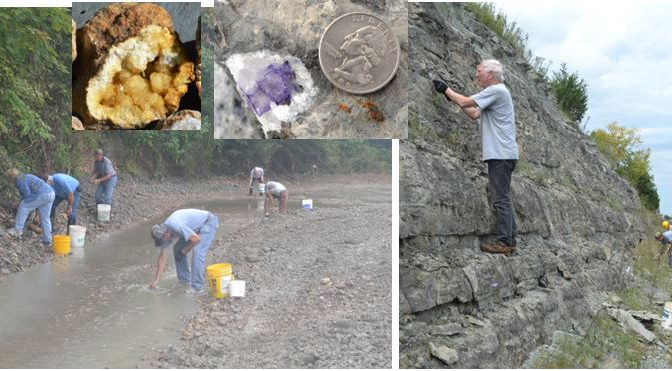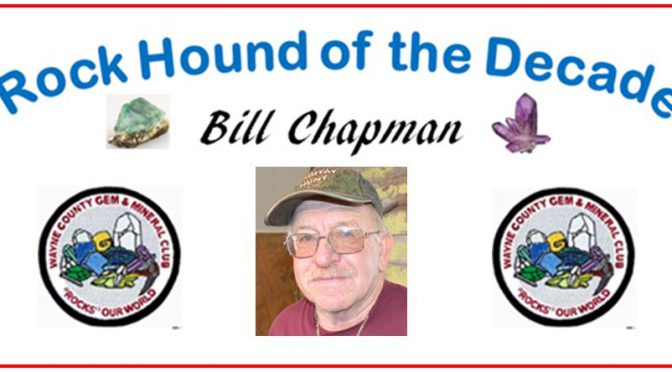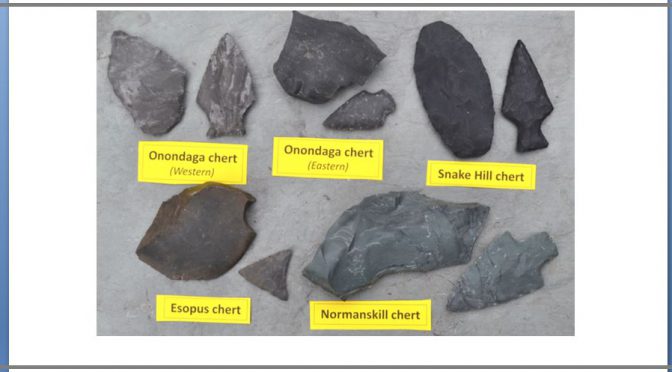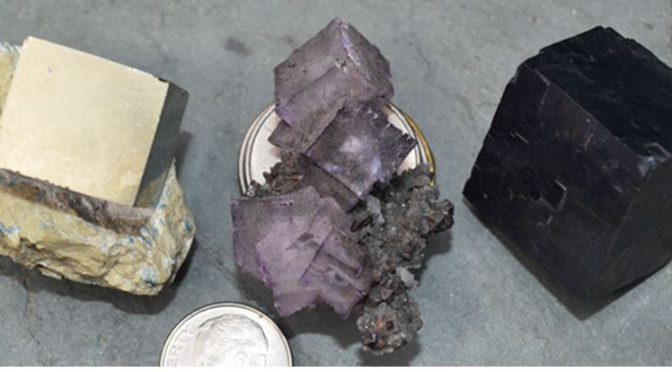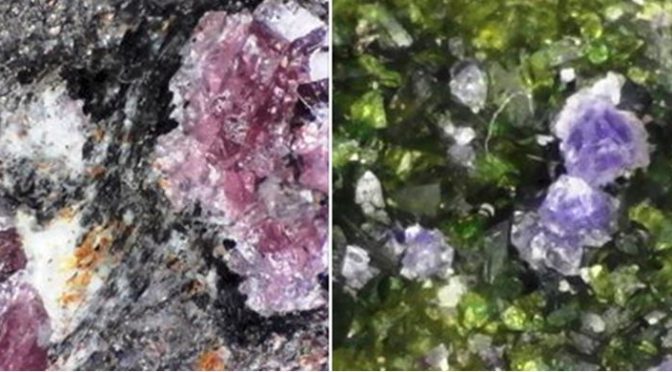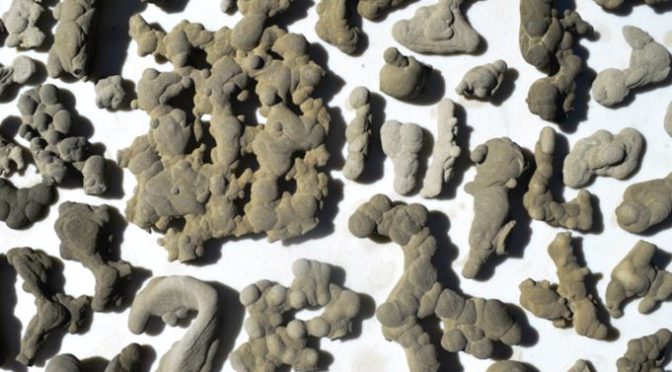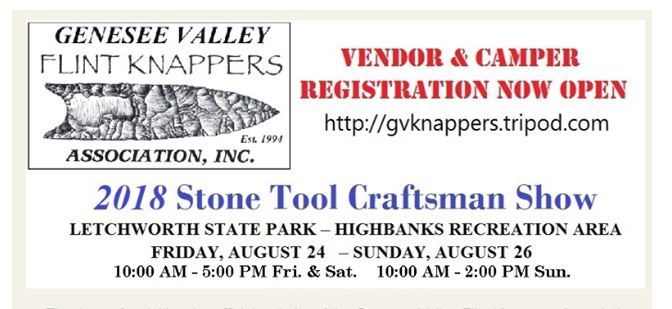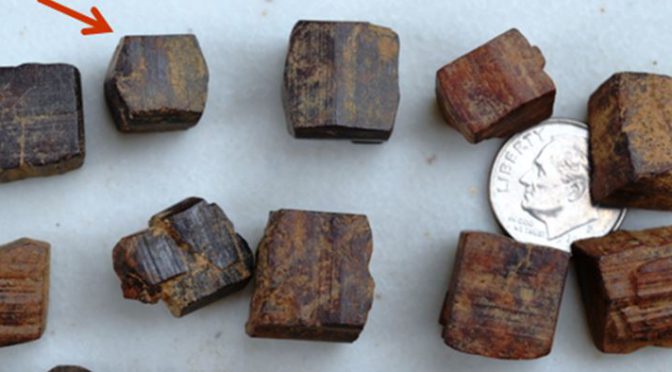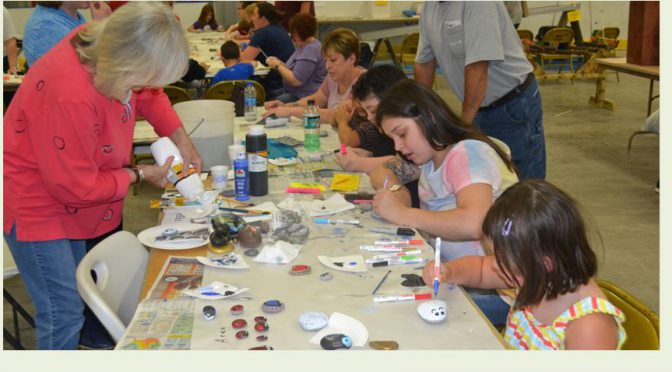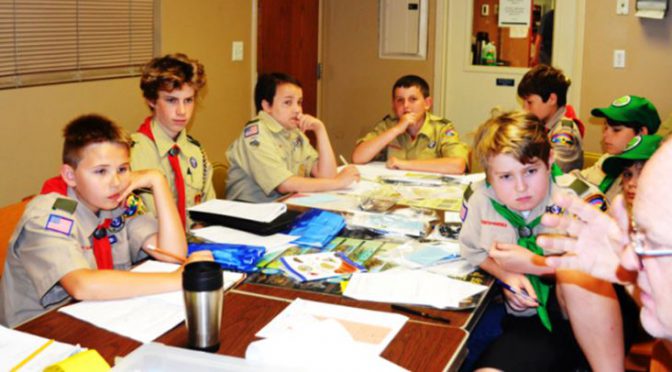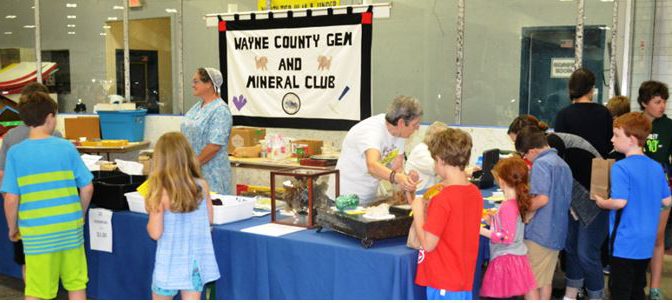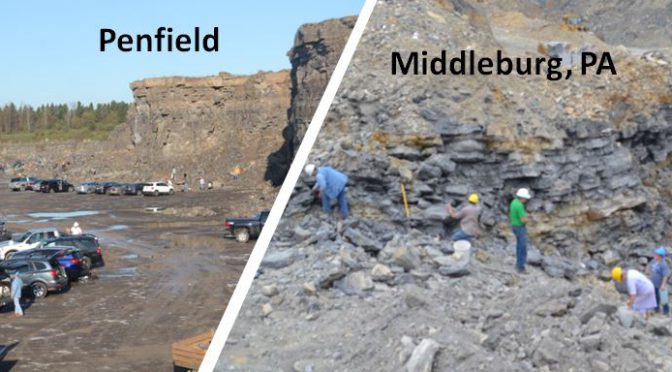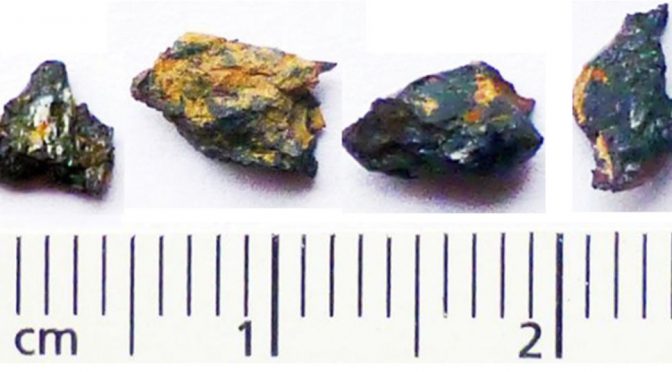Do you need an idea for a gift for that favorite mineral collector on your shopping list? Or perhaps you are like me, and you are looking to buy yourself a nice present? In either case, I may have the perfect book idea for you. How about “A Collector’s Guide to the Balmat District”?
Porphyroblasts
Porphyroblast: I’ve always thought that was such a neat word, maybe even interesting enough for a story. Say it out loud three times (“pore-fur-o-blast, pore-fur-o-blast, pore-fur-o-blast”). Now don’t you want to learn more, perhaps even own a few?
Porphyroblasts are those large recrystallized minerals that grow in the groundmass of a metamorphic rock, most typically in schists and gneisses. In New York State, we immediately think of the bright red almandine-pyrope garnets in the gneissic rocks in the Gore Mountain area, but the truth is the metamorphic schists and gneisses throughout New York and New England often contain garnet porphyroblasts. Unfortunately a lot of New York’s garnets are hosted in high-grade metamorphic gneiss and they don’t display crystal faces when the rocks are broken. Nevertheless they are large, colorful and fun to collect.
Collecting In-Between: Sand
Wayne County Gem and Mineral Club member Jim Rienhardt collects sand. In the November WCGMC Newsletter he tells us how and why. I thank him for letting me republish the article here.
by Jim Rienhardt:
Rock to sand to rock: Rock collectors collect on both ends. So do I, but I also collect from the middle – the sand. And, I am not alone. There are many, many people who collect sand and have tens of thousands of samples. But why, isn’t sand uninteresting? The same may be said by someone who doesn’t understand collecting rocks.
Cutler Mail Chutes: A Rochester Invention
In the late 19th century, building technology and urban development led to taller multistory buildings. Office and apartment buildings grew vertically. Naturally this led to new opportunities for creativity and invention and the Post Office Department was looking for improved methods to collect and move the mail from these buildings.
The idea of creating mail chutes to optimize the collection of outgoing mail from the taller buildings sounds like a simple innovative solution that should have occurred as soon as tall buildings were built. But it took until 1883 for the mail chute to be invented and the first installation was right here in Rochester, New York.
Rocks from the Sky
Those of you who frequent the Geologyin.com webpage, or who are members of the Facebook Group “Amazing Geology” may have seen these stories in mid-October. It is a lesson in always keeping your eye on the rocks around you. Or perhaps to watch the sky for falling rocks!
The Art of Falling
Linda Schmidtgall is the new President of the Wayne County Gem and Mineral Club. A little bit ago she wrote a story about her experiences with falling which was published in the September WCGMC newsletter. With permission I republish here.
Rockhounds have to learn how to fall. It is actually very important to do it with grace. BUT you do want to make sure someone is watching or you will waste a good fall. It seems I take at least one great trip down a hill or something every year. A few I recall are:
A Lot of New Places to Dig
There are many reasons to plan and participate in joint club trips like the recent Labor Day trip to Kentucky where folks from several clubs joined together (see acknowledgments at the end of this note). The obvious is new places and new friends and we sure encountered both during our three days in Kentucky.
WCGMC Rockhound of the Decade
It is with much pleasure that I share Wayne County Gem and Mineral Club’s September announcement.
WCGMC does not have a Rockhound of the Year Award for 2018. The person we wish to acknowledge this year has done too much for too long for that simple title. Instead, we proudly proclaim Bill Chapman as WCGMC Rockhound of the Decade.
New York Chert
Knapping is the shaping of flint, chert, obsidian or other suitable material through the process of chipping off small pieces, thus shaping the piece into a desirable tool, weapon, or work of art. The process takes advantage of the fracture style of cryptocrystalline quartz and glass. Lacking cleavage or any natural weaknesses quartz fractures along smooth curved surfaces which often come to very sharp edges. This property is called conchoidal fracture.
Isometric Minerals
Perhaps you are familiar with mineral dealer David Joyce’s song about “Crystal Systems” and the refrains about the isometric system. They go something like this:
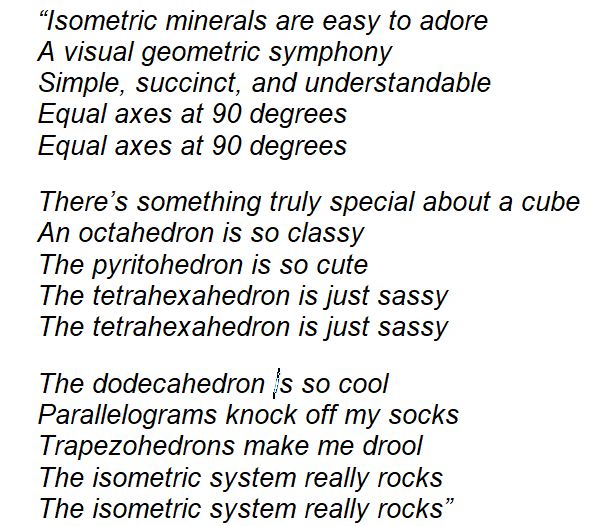
You can hear the remaining verses and lyrics here. . And read a review of his full CD in our July 2017 newsletter. You will find that David is not as complimentary about the other crystal systems.
BUT, did you know that despite the myriad of modified isometric forms that minerals like pyrite, galena or fluorite can display, there are only six basic isometric crystal forms. It is the interesting and often complex interplay and superpositioning of these forms that create the aesthetic beauty.
The Long Long Chimney
This article is republished here with permission of its author, Kathleen Cappon. She wrote the piece for the September, 2018 Wayne County Gem and Mineral Club newsletter.
This is a story about how I dreamed of having a large stone chimney on my future home. The idea was inspired by seeing the stone pillars at the entrance of Fair Haven State Park each time my family went there in the 1950’s.
Some of you may remember the movie “The Long Long Trailer” starring Lucille Ball and Desi Arnaz. They purchase a travel trailer to go cross country and at each new place Lucy picks up a sentimental or pretty rock to bring home.
Massachusetts Micromounts
One of the sites I visited with the Wayne County Gem and Mineral Club during the June Massachusetts trip was the large dump beside the Quabbin Aqueduct shaft #10 in Hardwick, Massachusetts. The 25 mile aqueduct connecting the Quabbin Reservoir to Boston was completed in 1939 and has been a primary source of water for the Boston region ever since. Rocks excavated from the #10 shaft include the Hardwick granite, the Monson gneiss, and a number of other metamorphic rocks. The dump is expansive and although it is becoming overgrown it remains a popular site for mineral collectors.
Clay Concretions in Sharon, Vermont
About 15,000 years ago the final of four glacial advances stopped in central Connecticut and a large end moraine was established. As the glacier retreated a large lake formed in what would become the Connecticut River Valley. Varved (seasonal) clay/silt layers were deposited. Debris (fossils, sticks, leaves, etc.) carried in with the clay/silt became nucleation points for calcite cementation and concretions grew in the clays. These unique concretions are now being exposed by erosion. The locals call them “Fairy Stones” or “Mud Babies”.
Stone Tool Craftsman Show
Have you ever heard of flint knapping? Do you know there is an active group of flint knappers in western New York and they hold their annual Stone Tool Craftsman Show every August? In 2018, the event is August 24-26 in Letchworth State Park, itself a geological wonder worth visiting. For three days members of the Genesee Valley Flint Knappers Association display their wares and share advice on knapping at the Highbanks Recreation Area in the park.
Visitors to the Stone Tool Craftsman Show can see flint knapping demonstrations and learn about a variety of other skills that helped prehistoric cultures survive. In addition to learning about the making of arrowheads, spears, and stone knives, the group holds several athletic competitions involving stone throwing weapons.
Lancaster, PA for pseudomorphs
On arrival the location does not look like a typical mineral collecting site. There are not any rocks to be seen. The GPS coordinates provided by Beard (2013) are smack in the middle of a cultivated field filled with small evergreen trees just off Fruitville Pike in Lancaster, PA. The field is flanked on two sides by subdivision housing and on a third side by a pair of little league baseball fields. Your first thought is that you botched the directions. Continue reading Lancaster, PA for pseudomorphs
Rock Painting
The new theme for June seemed to be painted rocks. First, Wayne County Gem and Mineral Club member Donna Smith brought her artistic talents to GemFest and we added a new craft to the event. Using rocks we had collected from various sites throughout the previous year, Donna set up between Linda Schmidtgall’s highly popular soapstone carving booth and Dave Millis’s gem tree/wire wrapping booth, creating a virtual trifecta of craft activities for youths and adults right in front of the club exhibits. Continue reading Rock Painting
Boy Scouts at GemFest
On the first weekend of June,. the Wayne County Gem and Mineral Club holds a two day mineral show in Canandaigua, New York. This year we welcomed a new partner to its annual gem, mineral, and fossil show. The Seneca Trailways Council of the Boy Scouts of America added GEMFEST to their calendar of events on both their Facebook page and their weekly e-mail which is sent to Scouts and their leaders across the council. WCGMC believes this is a perfect match. The involvement of Scouts aligns with both of WCGMC’s primary objectives, providing family fun and working to spread knowledge while stimulating interest in the earth sciences. Continue reading Boy Scouts at GemFest
GEMFEST 2018
For the fourth year is a row, the Wayne County Gem and Mineral Club held its annual show at the Greater Canandaigua Civic Center on the first full weekend of June. Attendance was up over 15%, as over 1400 folks crossed into the arena to visit the venue over the course of two days. We exceeded our expectations with our club activities, nearly running out of soapstone as 180 1.5” squares were carved, filed and polished by visitors. The sluice was busy as usual. Over 300 bags of sand with minerals, gems, shark teeth and more were run across the sluice table. Continue reading GEMFEST 2018
A Weekend in May: Penfield and Central PA
The first weekend of May split the Wayne County Gem and Mineral Club into two parties. Many stayed in western New York and visited Penfield Quarry on the annual Dolomite Products open house. If you check out our club Facebook page you will find several had a successful day among nearly 200 collectors from across the northeast who visited that day. But others of us had planned our annual pilgrimage to central Pennsylvania for that weekend, travelling south with visions of wavellite and large lepidodendron tree stumps dancing in our heads.
The Hypathia Stone
We all dream of finding that special rock, one that is totally unique, one that can hold that center position on the top shelf of our mineral cabinet. Yes, that perfect piece we can be proud to display while telling the story of how we found it. In 1996, a geologist working for the Egyptian Geological Survey had his dream fulfilled. Aly Barakat was studying Libyan desert glass formed 26 million years ago, presumably by a meteorite impact, when he made his incredible find. As a geologist he knew that the colorful broken pebbles he found deep in the Saharan desert were unique, but it took more than two decades to learn how special they truly are. Continue reading The Hypathia Stone
